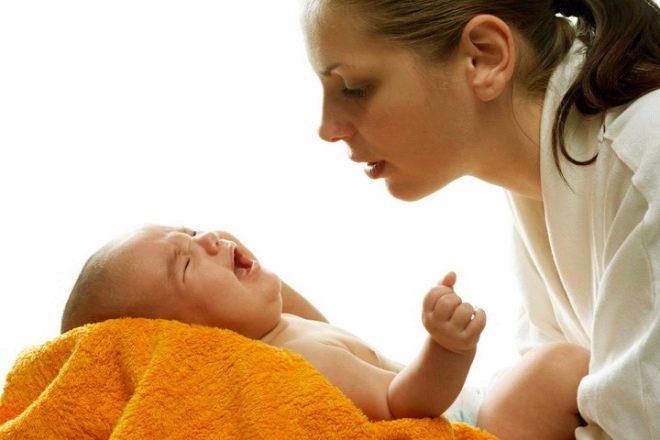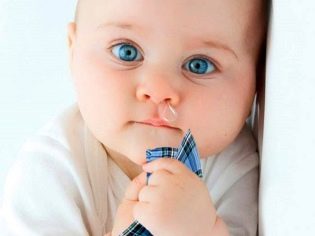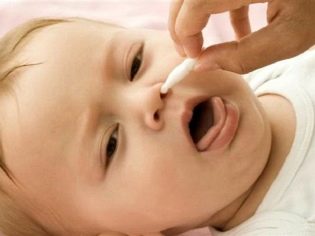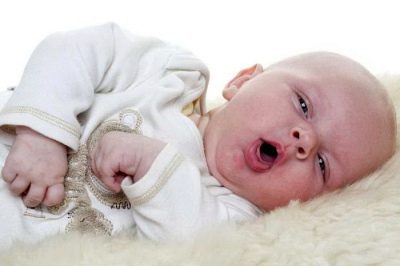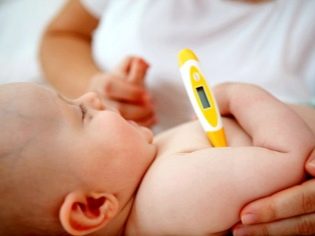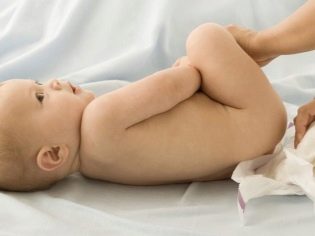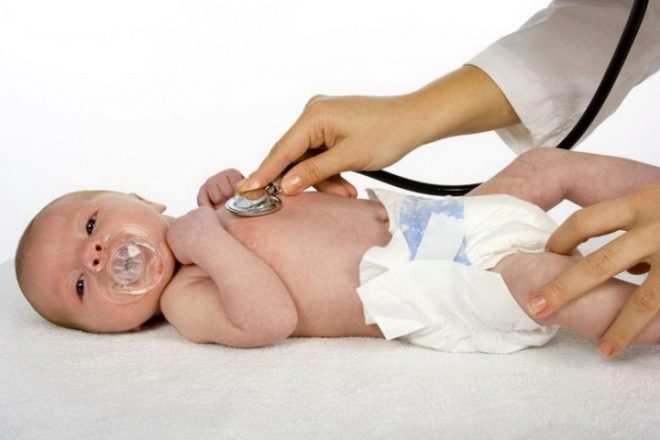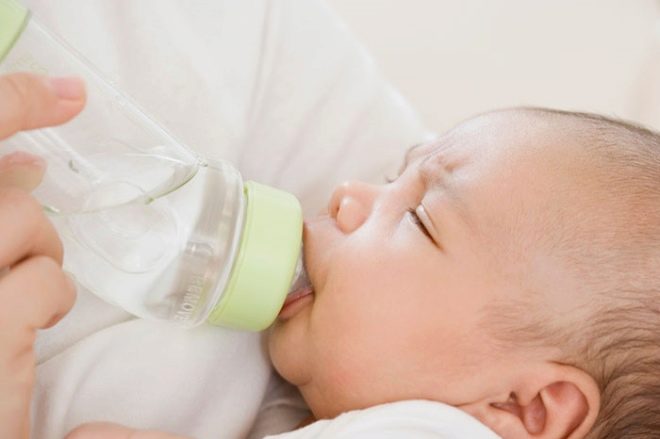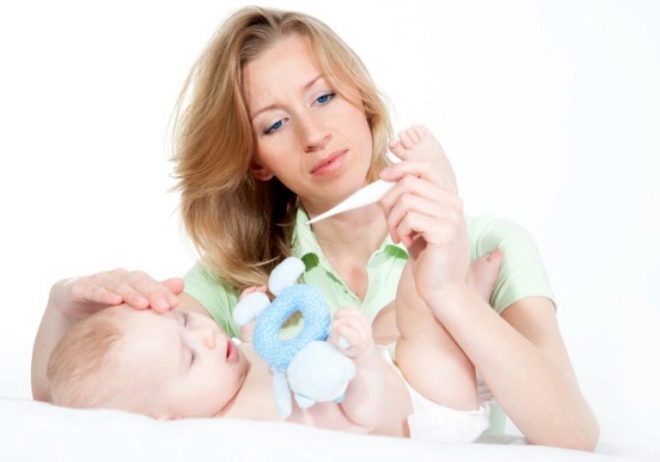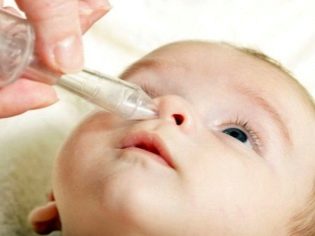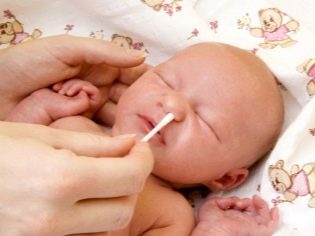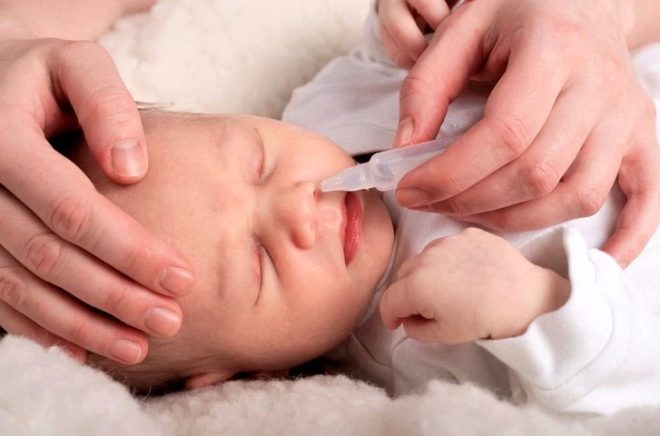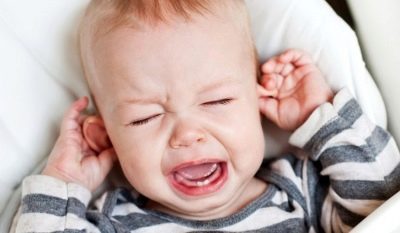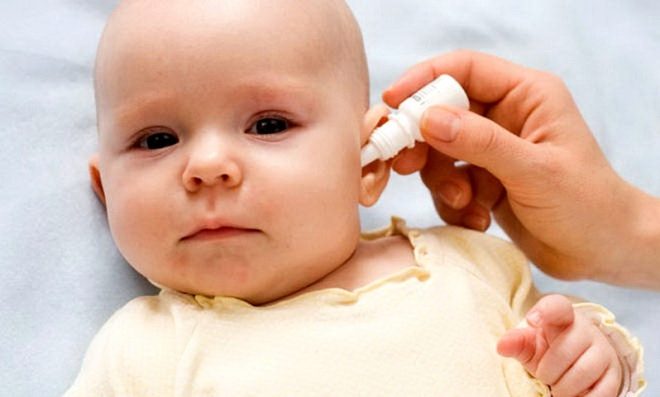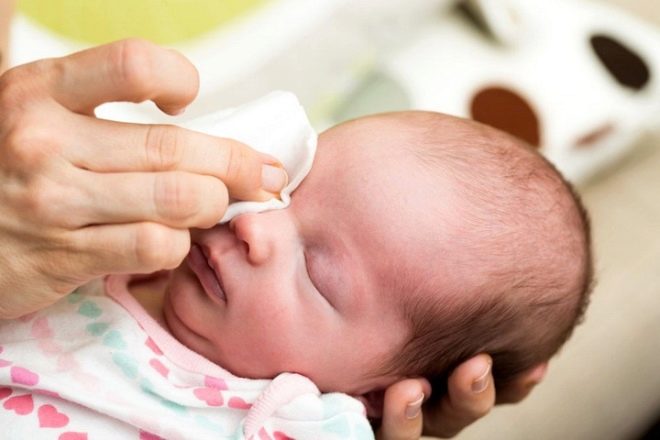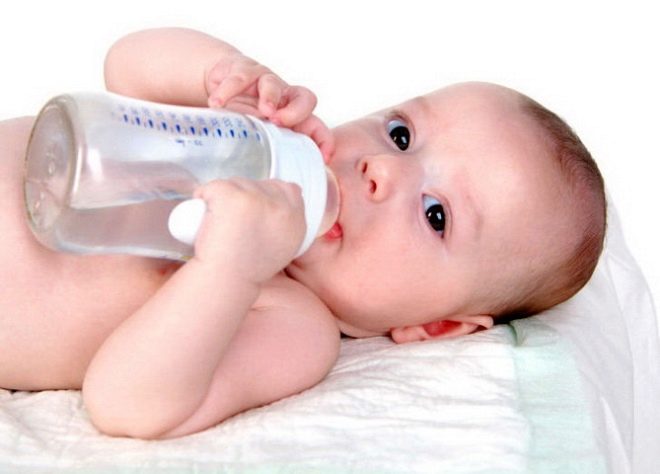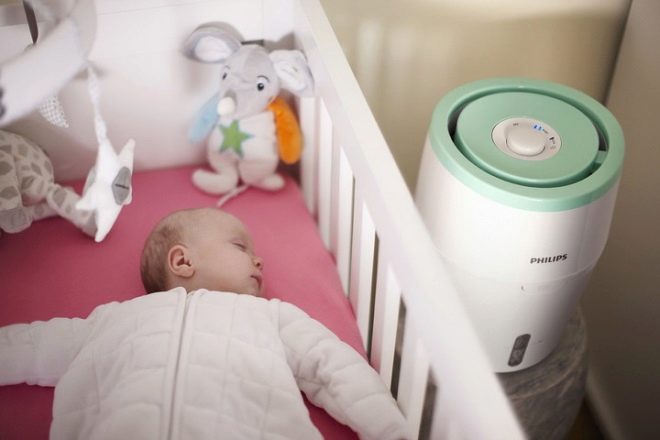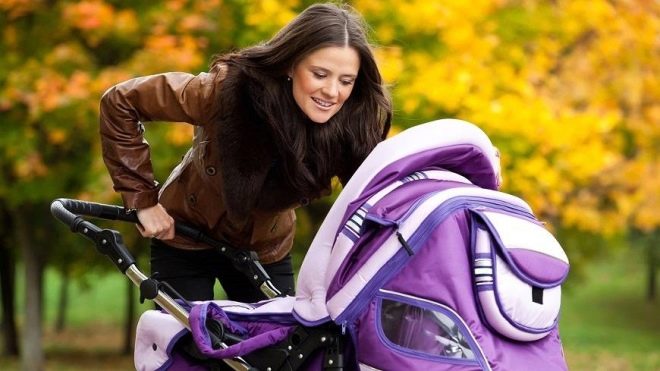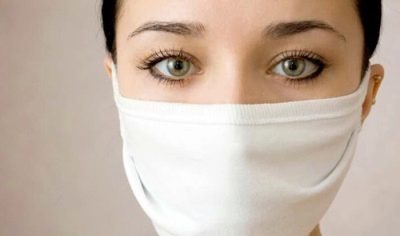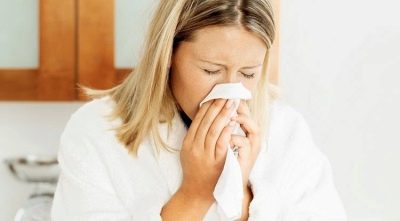Symptoms and treatment of colds in infants, prevention: how not to infect the baby
Unfortunately, colds in very young children are found, unfortunately, quite often. Their danger is that in case of late diagnosis, they can be quite difficult and be accompanied by dangerous complications. This article will tell you about the main symptoms of a cold and its treatment in infants; you will also learn about the prevention of colds in childhood.
First signs
Infant babies are prone to colds quite a lot. This is largely due to the fact that in newborns and infants, thermoregulation does not work well enough. Changing the temperature can contribute to the rapid supercooling of the child's body, which, as a rule, leads to the development of diseases.
Cold symptoms can be different. Their intensity depends on various factors:
- child's age;
- the presence of concomitant diseases;
- prematurity at birth;
- baseline immunity.
Usually, the first adverse symptoms of a cold appear within a few days of hypothermia. However, weakened children can quickly get sick. Such a rapid development of adverse symptoms is affected by reduced immunity.
There is a cold in infants in different ways. The most common symptoms are as follows:
- Runny nose It is usually slimy. Some babies runny nose can be quite strong and even debilitating.
- Nasal congestion. The accumulation of mucus in the nasal passages contributes to the fact that the baby has nasal breathing. As a rule, this symptom can be easily noticed from the side - the child begins to actively breathe through his mouth.
- Redness in throat. Usually, the entire wall of the pharynx becomes bright red. Against the background of such inflammation, the baby becomes difficult to swallow. Usually the redness in the throat of a baby persists during the entire acute period of a cold.
- Cough. In most cases, it appears simultaneously with a runny nose, but it may be delayed by 1-2 days. As a rule, cough during cold is dry. In some cases, especially when a bacterial infection joins, the nature of the cough changes - it becomes wet with sputum.
- Increased body temperature. The inflammatory process that provokes hypothermia rather quickly manifests itself by elevated temperature. Her numbers determine the severity of the disease. At the height of the disease, the baby’s body temperature can reach 37-38.5 degrees.
- Impaired stool. In some cases, when you have a cold, your baby may have diarrhea. This symptom appears, as a rule, in case of ARVI or other viral infection against the background of a cold.
Changes in behavior and appearance
A sick baby also changes behavior. To suspect that the crumb has caught a cold, the parents can and according to the characteristic signs of a change in his usual mood. So, a sick baby usually decreases appetite. Baby begins to abandon the maternal breast.
The baby is easily excited or, conversely, becomes too sluggish. With a cold, sleep is also disturbed. The child begins to sleep restlessly, often wakes up.
Changing the look of the child. Integuments usually turn pale. Against the background of high body temperature in the crumbs can cheeks blush. The eyes become somewhat turbid.
Heat may be accompanied by profuse sweating. Baby's skin becomes sticky to the touch. This is especially noticeable in the hair and neck area. A bad cold can make the child's breathing more frequent.
Parents can notice this symptom quite simply by turning their attention to the movements of the baby’s chest. It will rise and fall with a fairly large frequency. Usually this symptom appears in very young children, as well as an increase in shortness of breath.
Young and inexperienced parents of babies who have not yet turned 2 months old, it is sometimes quite difficult to distinguish colds from other diseases. Moms and daddies of older children can “write off” the symptoms of a cold for teething.
It often happens that they independently begin to engage in the treatment of the crumbs, even without calling a doctor to the house. To do this is absolutely impossible. Cold symptoms in babies are really quite easy to confuse with other dangerous infections. Not for all diseases the treatment algorithm is the same.
In order not to delay treatment and make the correct diagnosis, it is very important that parents necessarily consult a pediatrician. Only after excluding a number of serious childhood infections can a cold be treated at home.
In case of any deterioration in the child's condition, it is very important to immediately contact a pediatrician.
How to treat a baby?
Make a treatment plan for the baby should a doctor. Prior to the arrival of a specialist, first of all, parents should calm down. It is important to remember that too agitated behavior of parents can quickly be transmitted to the baby. He will become more anxious and tense.
During the acute period of the disease you should not force feed the baby. Such feeding can provoke the occurrence of vomiting in a child, and in some cases even contribute to an even greater rise in body temperature. Dr. Komarovsky believes that a sick baby should be given enough liquid. You can give your child a little water - on average, ½ tsp every 20-30 minutes. In the future, the drinking regimen will be determined by a pediatrician who will examine the sick baby.
Watch how the baby is dressed. If the baby's skin is too hot and bright red, then you should not swaddle it too much. In such a situation, doctors usually recommend choosing a less warm vest. Too much wrapping of the child will only aggravate his condition.
If the nursery is cool and the baby’s skin feels cold to the touch, then in that case you should cover the baby with a blanket. During chills, the child usually becomes pale and lethargic.
It so happens that many mothers with a high body temperature begin to rub their babies with a solution of vinegar or alcohol. Do not do this. Acetic acid can have a damaging effect on the skin. For rubbing the skin suitable ordinary warm water (28-35 degrees).
To calm the baby, take him in your arms. Try to keep the head of the child slightly higher than his body. In this position, the baby becomes somewhat easier to breathe.
With an increase in body temperature in a child should not bathe him. All water procedures are necessarily discussed with the doctor. At the first time, when the body temperature of the crumbs remains quite high, long bathing methods are excluded. They can contribute to the violation of thermoregulation in the baby, which can aggravate his condition.
Improving nasal breathing
To improve nasal breathing, it is necessary to clean the baby’s nose from the mucus accumulated there. For this you can use special devices or small cotton flagella - turunds. They are sold now in almost any pharmacy.It is also necessary to clear the nose before all feedings.
In order to clean the baby's nose, it is necessary to moisten a cotton-wool turunda and insert it into the nostril of the crumbs approximately 7 mm. Further, light but sure movements should be scrolled several times and then pulled out. Similar actions are carried out with the other nostrils.
If the mucus is thick and leaves quite bad, you can drip 2 drops of boiled water or saline into the nose. After that, you should repeat the procedure with cleansing nostrils using cotton turunds.
The nasal wing massage can also improve nasal breathing. It is held by stroking movements from the nose to the base of the nose. It is very important to consult a pediatrician before any massage.
Improving nasal breathing is possible with the help of drugs. One of these drugs is Interferon. It has been successfully used by physicians for the treatment of rhinitis, even in the smallest patients. With a cold, this drug is usually used up to 5 times a day. The average duration of treatment is usually 3 days.
What to do with ear inflammation?
If the crumb often rubs his ear and also cries a lot, then this can be a signal to parents that he had otitis because of a cold. Check it out is pretty simple. To do this, parents should push a little or pull the ear tragus. If the child has inflammation in the ear, then he will react to this action very violently.
It is important to note that it is impossible to treat otitis in an infant itself. Instillation of various alcoholic solutions, juices and other folk remedies may contribute to the progression of the disease, as well as the development of dangerous complications.
At the first signs of pain in the ear should immediately show the child to the doctor. After examining the baby, the doctor will determine if he has otitis signs and, if necessary, write out anti-inflammatory drugs.
Such agents are usually instilled with a pipette or injected with a turunda soaked in a medicinal solution. As a rule, medicines for the treatment of otitis in children are administered 3-4 times a day. The total duration of treatment is determined individually, based on the age of the child and the severity of the disease.
Folk remedies
Note that choosing this method of treatment should be very careful. You should not mindlessly trust popular methods. Before choosing a remedy, you should always consult a doctor. A number of popular recipes can cause an allergic reaction in a baby.
Among the large variety of methods you can find very useful ones. One of them is a decoction made from chamomile. It can be used if, against the background of a cold, the conjunctiva of the eye has inflamed the infant. In this case, the eyes of the child become red, with a clearly visible surface mesh of the blood vessels.
To prepare the solution you will need 1 tablespoon of chamomile flowers. This amount of plant materials must be poured with a glass of boiling water. Insist should be 45-60 minutes, then strain. Next, the resulting infusion is cooled to a comfortable temperature.
For wiping the baby’s inflamed eyes, cotton pads dipped in chamomile broth are used. You can do this procedure 3-4 times a day. If the inflammation does not pass, then in this case special medicinal ointments may be required. They are already written out strictly by the doctor, as they have a number of contraindications for use.
Is it possible to feed breast milk?
With a cold, it is not worth depriving a baby of natural breastfeeding. If the mother of the baby is not sick, then you can carry out breastfeeding. It is only important not to be overly zealous with this, and also not to force the baby. When breastfeeding a child's body receives all the nutrients necessary for its development, as well as protective antibodies - immunoglobulins.
In babies who already receive complementary foods, the situation is somewhat different. As a rule, in the midst of a cold disease, the baby simply refuses even to his favorite food. It really becomes rather difficult to feed the baby, but you still need to do it.
Proteins are simply necessary for the quicker recovery of a sick baby. They are structural components of immunoglobulins. It is important to always monitor the amount of protein products included in the children's diet.
Drinking regimen is an essential component of treatment. In order for a child's body to quickly get rid of toxins that occur in the body during a period of acute inflammation, it needs water. You can add a baby to ordinary boiled water. Babies who have already drunk fruit drinks and juices before the onset of a cold can continue to give these drinks. Parents need to monitor the temperature of water or compote, which they give to their baby.
The drink should be warm, but not cold. Juices and fruit drinks should not choose sour. The best drink for feeding a child is still considered ordinary boiled water.
Prevention
In the season of colds and respiratory diseases, it is very important for the parents of the infant to observe preventive measures. Simple rules will help them to save their crumbs from colds. Most viral respiratory diseases are transmitted through the air. The smallest viruses are fairly well preserved in adverse conditions and are transmitted through breathing from parents to the baby.
In order to protect a child from a cold, parents should follow the following recommendations:
- Keep clean in the house and especially in the nursery. To do this, the nursery should regularly carry out wet cleaning. During the period of seasonal viral infections and colds, you can use special products containing antimicrobial components. When choosing such tools, pay attention to their being safe for use in children's rooms.
- Keep baby hygiene. Healthy baby's skin helps protect it from many diseases. Bathe your baby with the advice of your pediatrician.
- Follow the processing of children's dishes. All dishes that are designed for the baby should always be clean and well dried. In poorly treated utensils microbes are settled quite easily, which can cause a child’s illness.
- Follow the rules of personal hygiene. Parents should also not forget to wash their hands with soap. It is especially important not to forget about this item during the flu and seasonal cold. Compliance with this simple rule will help not to infect the infant with infections that are dangerous to him.
- Do not forget about the schedule of ventilation. In the room where the baby is located, the necessary microclimate must be maintained. Try to carry the child out of the room when airing. Do not leave a newborn baby in a room with an open window. This can provoke hypothermia and a cold.
- Keep track of the temperature in the nursery. Optimally, it was 24 degrees. Make sure that the temperature in the room does not fall below 20 degrees.
- Remember the humidity. Too dry air in the room is dangerous for the baby, as it can provoke overdrying of the delicate mucous membranes of the respiratory tract. To create the optimum humidity in the children's room, you can use special devices - humidifiers.
- Keep breastfeeding. Scientists believe that babies who get breast milk have better immunity indicators than their peers who eat ready-made formulas. Breast milk is an excellent source of immunoglobulins, protecting the children's body from various infections.
- Follow the pediatric recommended day regimen. Regular adherence to the routine is necessary for the child's body for optimal performance and growth.
- Do not forget about walking. They are necessary for the child's body for hardening. For walks with the baby, choose comfortable warm clothes, in which the crumbs will not be too hot. Try to cover the neck of the child and his face from the strong wind.
How to protect the child from the disease if the mother is sick?
This question is quite complex, but very often occurs in practice. In order to reduce the likelihood of infecting a baby, an ill mother should adhere to the following recommendations:
- In the acute period of the disease is to reduce the contact with the child.
- Before you take the child in her arms, a woman should wash her hands with soap and water.
- If the cause of the disease was a viral infection, you should not neglect the wearing of a normal gauze mask. It should be changed every 2 hours.
- It is necessary to start treatment in time. The woman also should not be delayed with an appeal to the doctor. At high temperatures, going to the clinic is not worth it. In such a situation it would be more rational to call a doctor at home.
- Do not forget about airing the room. Sick mother can cause the spread of viruses throughout the apartment. In order to reduce the number of microbes in a residential area, it must be aired.
- Strengthen immunity is not only the baby, but his mother. It is extremely important for a woman with an infant to get enough sleep, to eat well and eat well, and also if necessary to get the vitamins prescribed by her doctor.
Regular walks in the fresh air and the observance of the daily regimen are important helpers in strengthening immunity.
For information on what means should be used to prevent colds in children, see the following video.


